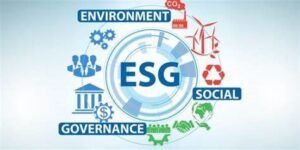
In January, 2021, the Biden Administration issued Executive Order 13990 (“EO”) which re-established an interagency working group (the “Working Group”) in order to formulate guidance on the “social cost of greenhouse gases“. The EO directed the Working Group to publish dollar estimates quantifying changes in carbon, methane and nitrous oxide emissions for consideration by all federal agencies when policy making.
Since 2021, the working group has published their Interim Estimates which were based largely on findings of their predecessor Working Group which was established during the Obama Administration.
Various State Attorneys General from Louisiana, Alabama, Florida, Georgia, Kentucky, Mississippi, South Dakota, Texas, West Virginia and Wyoming (the “Plaintiff States“) challenged the EO and the Interim Estimates as procedurally invalid, arbitrary and capricious and obtained a preliminary injunction in the Western District Court of Louisiana.
The 5th Circuit concluded that the Plaintiff States did NOT establish standing to bring such a claim, and, as such, dismissed their action for lack of jurisdiction and vacated the lower courts preliminary injunction. The court indicated that the Plaintiff States failed to meet their burden to prove standing as they did not show an injury in fact. With this ruling, the Working Group and the Interim Estimates may now be used by various federal agencies as part of their analysis and policymaking.
For more than a decade, federal agencies have considered the effect of greenhouse gas emissions (along with a host of other variables) in their cost benefit analysis in determining whether to and the cost of implement various regulations. As the Court pointed out, before proposing any significant action, federal agencies are required to assess the costs and benefits of the regulation and submit to the Office of Management and Budget their assessment for review.
In 2009, the Obama Administration established the original working group to develop a transparent and defensible method, designed for the federal rulemaking process, to quantify the social costs of greenhouse gases. In 2017, after years of work and research, this group derived estimates from peer-reviewed models for translating emissions into dollar costs. Their findings were the subject of public notices and comments and were peer reviewed by the National Academies of Science, Engineering and Medicine.
Later in 2017, the Trump Administration disbanded the prior working group and its work product withdrawn from federal agencies, but these federal agencies were not barred from “monetizing the value of changes in greenhouse gas emissions resulting from proposed regulations.” In ohter words, the agencies were not mandated to include the Interim Estimates BUT they were still permitted to include greenhouse gas emissions and their impact in the agencies’ recommendations. The result of the disbanding of the working group was that instead of utilizing a coordinated approach across all agencies, each agency was left to its own devices in determining how and whether to score green house gas emissions in preparing its cost benefit analysis for a given regulation.
In early 2021, under the Biden Administration, the Working Group was reconvened under EO 13990 and re-tasked with developing Interim Estimates that would be “appropriate and consistent with applicable law.” When the applicable federal agency relies on the Interim Estimates to justify a final action, the court noted that the agency “must respond to any significant comment on those estimates and ensure it analysis” is “not arbitrary or capricious”.
Although some could characterize the Court’s ruling as a bit of legal “in the weeds” arguments over standing and injury, the crux of the court’s ruling hinged on the fact that the “EO 13990 does NOT require any action from federal agencies”. Agencies are required to exercise discretion in conducting their cost benefit analysis and deciding whether or not to use the Interim Estimates. If used, “the Interim Estimates are required by the EO to be appropriate and consistent with applicable law.” The Court further noted that “nothing in EO 13990 requires States to implement the Interim Estimates.”
Parting Thoughts – activism by the Plaintiff States Attorneys’ General is on the rise in the ESG arena and is evident in various articles and actions being taken to oppose various ESG and environmentally focused regulations. It is likely that this activism continues and that further ESG focused programs in investments arena and in disclosure of the impacts of climate change (like the proposed SEC Rules on Climate Change Disclosure which are supposed to be announces as final this month) continue to be called into question by these Plaintiff States. We will continue to monitor and report on these developments as they occur and are here if we can be helpful to you in your analysis on how they might affect your operations, your businesses or you.
Duane Morris has an active ESG and Sustainability Team to help organizations and individuals plan, respond to, and execute on your Sustainability and ESG planning and initiatives. We would be happy to discussion your proposed project and how this DOE funding prize might apply to you. For more information or if you have any questions about this post, please contact Brad A. Molotsky, Alice Shanahan, Jeff Hamera, Nanette Heide, Jolie-Anne Ansley, Robert Montejo, Seth Cooley or David Amerikaner or the attorney in the firm with whom you in regular contact or the attorney in the firm with whom you are regularly in contact.
